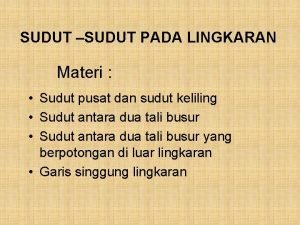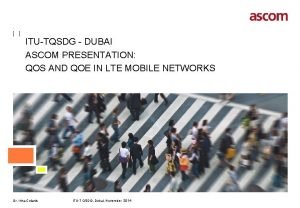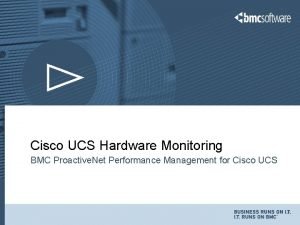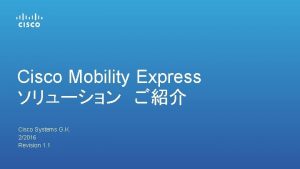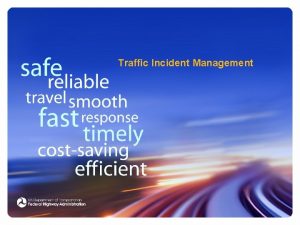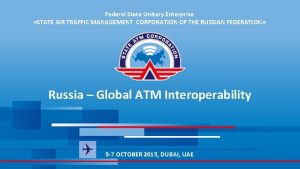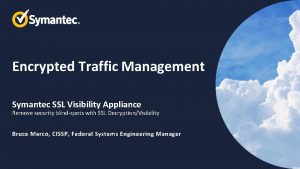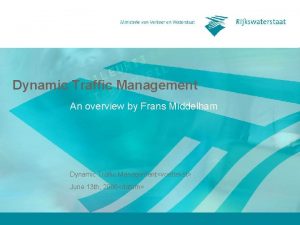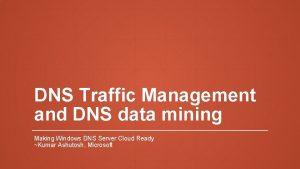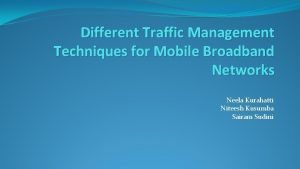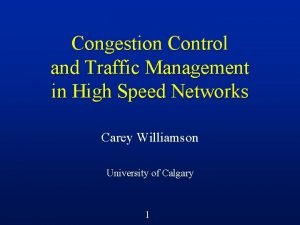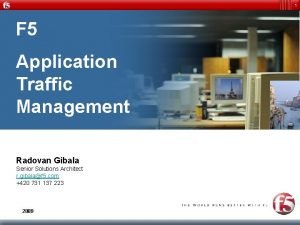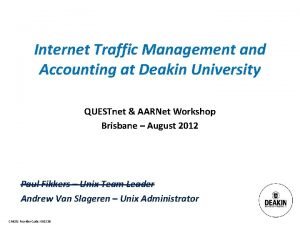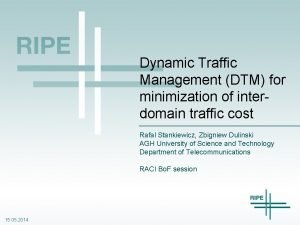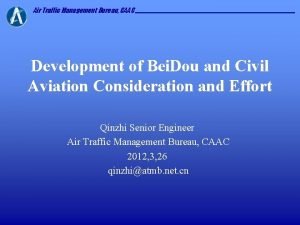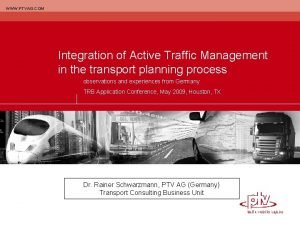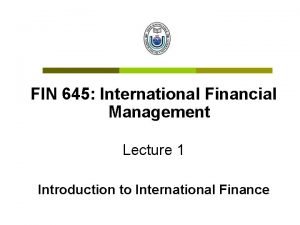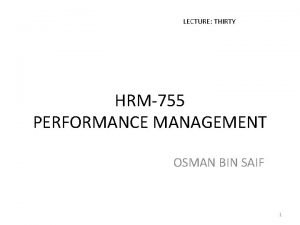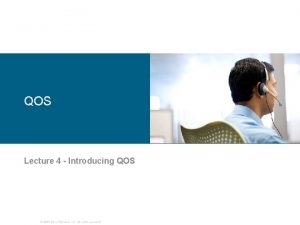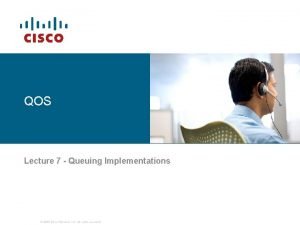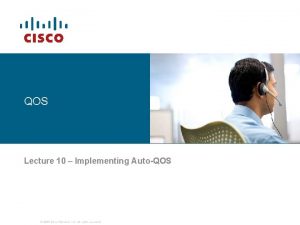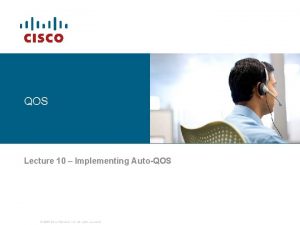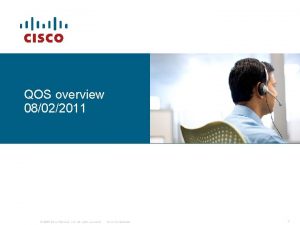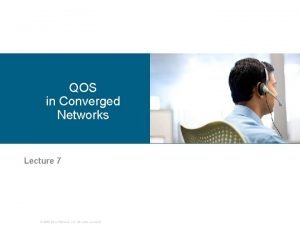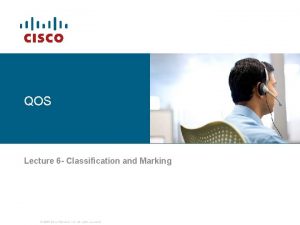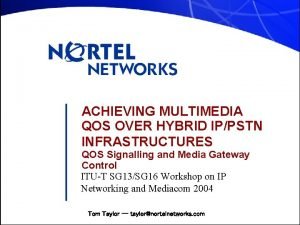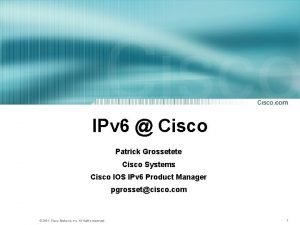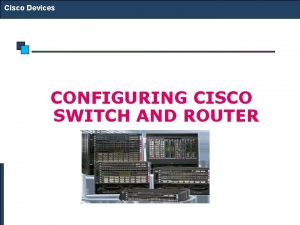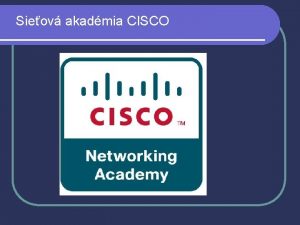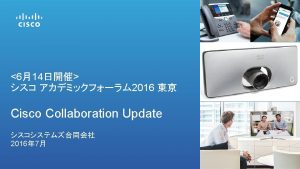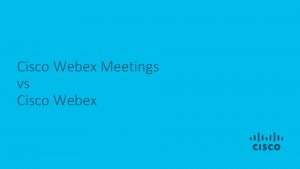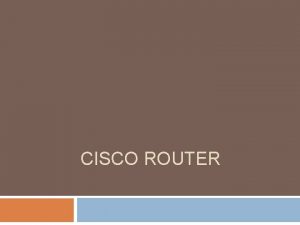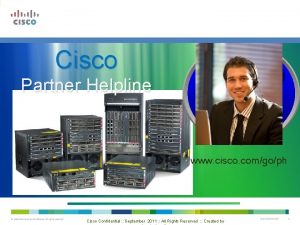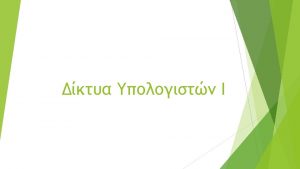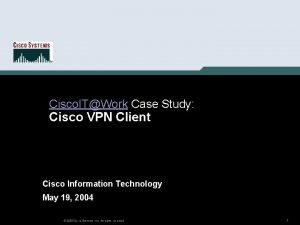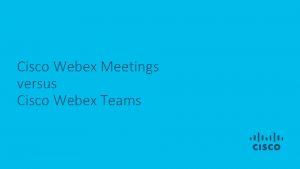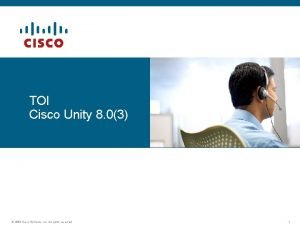QOS Lecture 8 Traffic Management 2006 Cisco Systems




































- Slides: 36

QOS Lecture 8 -Traffic Management © 2006 Cisco Systems, Inc. All rights reserved.

Managing Interface Congestion with Tail Drop § Router interfaces experience congestion when the output queue is full: Additional incoming packets are dropped. Dropped packets may cause significant application performance degradation. Tail drop has significant drawbacks. © 2006 Cisco Systems, Inc. All rights reserved.

Tail Drop Limitations § In some situations, simple tail drop should be avoided because it contains significant flaws: Dropping can affect TCP synchronization. Dropping can cause TCP starvation. There is no differentiated drop—high-priority traffic is dropped as easily as low-priority traffic. © 2006 Cisco Systems, Inc. All rights reserved.

TCP Synchronization § Multiple TCP sessions start at different times. § TCP window sizes are increased. § Tail drops cause many packets of many sessions to be dropped at the same time. § TCP sessions restart at the same time (synchronized). © 2006 Cisco Systems, Inc. All rights reserved.

TCP Delay, Jitter, and Starvation § Constant high buffer usage (long queue) causes delay. § Variable buffer usage causes jitter. § More aggressive flows can cause other flows to starve. § No differentiated dropping occurs. © 2006 Cisco Systems, Inc. All rights reserved.

Random Early Detection (RED) § Tail drop can be avoided if congestion is prevented. § RED is a mechanism that randomly drops packets before a queue is full. § RED increases drop rate as the average queue size increases. § RED result: TCP sessions slow to the approximate rate of output-link bandwidth. Average queue size is small (much less than the maximum queue size). TCP sessions are desynchronized by random drops. © 2006 Cisco Systems, Inc. All rights reserved.

RED Drop Profiles © 2006 Cisco Systems, Inc. All rights reserved.

RED Modes § RED has three modes: No drop: When the average queue size is between 0 and the minimum threshold Random drop: When the average queue size is between the minimum and the maximum threshold Full drop (tail drop): When the average queue size is above the maximum threshold § Random drop should prevent congestion (prevent tail drops). © 2006 Cisco Systems, Inc. All rights reserved.

TCP Traffic Before and After RED © 2006 Cisco Systems, Inc. All rights reserved.

Weighted Random Early Detection (WRED) § WRED can use multiple RED profiles. § Each profile is identified by: Minimum threshold Maximum threshold Mark probability denominator § WRED profile selection is based on: IP precedence (8 profiles) DSCP (64 profiles) § WRED drops less important packets more aggressively than more important packets. § WRED can be applied at the interface, VC, or class level. © 2006 Cisco Systems, Inc. All rights reserved.

WRED Building Blocks © 2006 Cisco Systems, Inc. All rights reserved.

Class-Based WRED (CBWRED) § Class-based WRED is available when configured in combination with CBWFQ. § Using CBWFQ with WRED allows the implementation of Diff. Serv Assured Forwarding PHB. § Class-based configuration of WRED is identical to stand -alone WRED. © 2006 Cisco Systems, Inc. All rights reserved.

DSCP-Based WRED (Expedited Forwarding) © 2006 Cisco Systems, Inc. All rights reserved.

Configuring CBWRED router(config-pmap-c)# random-detect • Enables IP precedence-based WRED in the selected class within the service policy configuration mode. • Default service profile is used. • Command can be used at the interface, per. VC (with random-detect-group), or at the class level (service policy). • Precedence-based WRED is the default mode. • WRED treats non-IP traffic as precedence 0. policy-map Policy 1 class mission-critical bandwidth percent 30 random-detect class transactional bandwidth percent 20 random-detect class-default fair-queue random-detect © 2006 Cisco Systems, Inc. All rights reserved.

Changing the WRED Traffic Profile router(config-pmap-c)# random-detect precedence min-threshold max-threshold mark-prob-denominator § Changes WRED profile for specified IP precedence value. § Packet drop probability at maximum threshold is: 1 / mark-prob-denominator § Nonweighted RED is achieved by using the same WRED profile for all precedence values. © 2006 Cisco Systems, Inc. All rights reserved.

CBWFQ Using IP Precedence with CBWRED § Enable CBWFQ to prioritize traffic according to the following requirements: Class mission-critical is marked with IP precedence values 3 and 4 (3 is high drop, 4 is low drop) and should get 30% of interface bandwidth. Class bulk is marked with IP precedence values 1 and 2 (1 is high drop, 2 is low drop) and should get 20% of interface bandwidth. All other traffic should be per-flow fair-queued. § Use differentiated WRED to prevent congestion in all three classes. © 2006 Cisco Systems, Inc. All rights reserved.

Sample WRED Traffic Profile with CBWRED © 2006 Cisco Systems, Inc. All rights reserved.

WRED Profiles: DSCP-Based WRED (Assured Forwarding) © 2006 Cisco Systems, Inc. All rights reserved.

Configuring DSCP-Based CBWRED router(config-pmap-c)# random-detect dscp-based § Enables DSCP-based WRED. § Command can be used at the interface, per. VC (with random detect group), or at the class level (service policy). § Default service profile is used. § The WRED random-detect command the WFQ queue-limit command are mutually exclusive for class policy. © 2006 Cisco Systems, Inc. All rights reserved.

Changing the WRED Traffic Profile router(config-pmap-c)# random-detect dscpvalue min-threshold max-threshold markprob-denominator • Changes WRED profile for specified DSCP value • Packet drop probability at maximum threshold is: 1 / mark-prob-denominator © 2006 Cisco Systems, Inc. All rights reserved.

CBWRED Using DSCP: Example § Enable CBWFQ to prioritize traffic according to the following requirements: Class mission-critical is marked using DSCP AF 2 and should get 30% of interface bandwidth. Class bulk is marked using DSCP AF 1 and should get 20% of interface bandwidth. All other traffic should be per-flow fair-queued. § Use differentiated WRED to prevent congestion in all three classes. § Make sure that the new configurations still conform to the design and implementation from the previous example. © 2006 Cisco Systems, Inc. All rights reserved.

CBWRED Using DSCP: Example (Cont. ) © 2006 Cisco Systems, Inc. All rights reserved.

Monitoring CBWRED router# show policy-map interface-name • Displays the configuration of all classes configured for all service policies on the specified interface router#show policy-map interface Ethernet 0/0 Service-policy output: Policy 1 Class-map: Mission-critical (match-all) 0 packets, 0 bytes 5 minute offered rate 0 bps, drop rate 0 bps Match: ip precedence 2 Match: ip dscp 18 20 22 Weighted Fair Queueing Output Queue: Conversation 265 Bandwidth 30 (%) Bandwidth 3000 (kbps) (pkts matched/bytes matched) 0/0 (depth/total drops/no-buffer drops) 0/0/0 exponential weight: 9 mean queue depth: 0 Dscp Transmitted Random drop Tail drop Minimum Maximum Mark (Prec) pkts/bytes threshold probability 0(0) 0/0 0/0 20 40 1/10 1 0/0 0/0 22 40 1/10 2 0/0 0/0 24 40 1/10 © 2006 Cisco Systems, Inc. All rights reserved.

Part 2 - Traffic Management § Policing Limits bandwidth by discarding traffic. Can re-mark excess traffic and attempt to send. Should be used on higher-speed interfaces. Can be applied inbound or outbound. § Shaping Limits excess traffic by buffering. Buffering can lead to a delay. Recommended for slower-speed interfaces. Cannot re-mark traffic. Can only be applied in the outbound direction. © 2006 Cisco Systems, Inc. All rights reserved.

Traffic Policing and Shaping Overview § These mechanisms must classify packets before policing or shaping the traffic rate. § Traffic policing typically drops or marks excess traffic to stay within a traffic rate limit. § Traffic shaping queues excess packets to stay within the desired traffic rate. © 2006 Cisco Systems, Inc. All rights reserved.

Why Use Policing? Why Use Shaping? § To limit access to resources when high-speed access is used but not desired (subrate access) § To prevent and manage congestion in ATM, Frame Relay, and Metro Ethernet networks, where asymmetric bandwidths are used along the traffic path § To limit the traffic rate of certain applications or traffic classes § To mark down (recolor) exceeding traffic at Layer 2 or Layer 3 § To regulate the sending traffic rate to match the subscribed (committed) rate in ATM, Frame Relay, or Metro Ethernet networks § To implement shaping at the network edge © 2006 Cisco Systems, Inc. All rights reserved.

Policing Versus Shaping § § Incoming and outgoing directions. Out-of-profile packets are dropped. Dropping causes TCP retransmits. Policing supports packet marking or re-marking. © 2006 Cisco Systems, Inc. All rights reserved. § Outgoing direction only. § Out-of-profile packets are queued until a buffer gets full. § Buffering minimizes TCP retransmits. § Marking or re-marking not supported. § Shaping supports interaction with Frame Relay congestion indication.

Traffic Policing Example § Do not rate-limit traffic from mission-critical server. § Rate-limit file-sharing application traffic to 56 kbps. © 2006 Cisco Systems, Inc. All rights reserved.

Traffic Policing and Shaping Example § Central to remote site speed mismatch § Remote to central site oversubscription § Both situations result in buffering and in delayed or dropped packets. © 2006 Cisco Systems, Inc. All rights reserved.

Token Bucket § Mathematical model used by routers and switches to regulate traffic flow. § Tokens represent permission to send a number of bits into the network. § Tokens are put into the bucket at a certain rate by IOS. § Token bucket holds tokens. § Tokens are removed from the bucket when packets are forwarded. § If there are not enough tokens in the bucket to send the packet, traffic conditioning is invoked (shaping or policing). © 2006 Cisco Systems, Inc. All rights reserved.

Single Token Bucket § If sufficient tokens are available (conform action): Tokens equivalent to the packet size are removed from the bucket. The packet is transmitted. © 2006 Cisco Systems, Inc. All rights reserved.

Single Token Bucket Exceed Action § If sufficient tokens are not available (exceed action): Drop (or mark) the packet. © 2006 Cisco Systems, Inc. All rights reserved.

Single Token Bucket Class-Based Policing Bc is normal burst size. Tc is the time interval. CIR is the committed information rate. CIR = Bc / Tc © 2006 Cisco Systems, Inc. All rights reserved.

Cisco IOS Traffic-Policing Mechanism Class-Based Policing Enable method Enabled in policy map Conditions Conform, exceed, violate Actions Drop, set, transmit Implementations Single or dual token bucket, single- or dualrate policing, multiactions © 2006 Cisco Systems, Inc. All rights reserved.

Cisco IOS Traffic-Shaping Mechanisms Class-Based Shaping FRTS Shaper for any subinterface Shaper for Frame Relay only Class-based Per DLCI or subinterface No support for FRF. 12 Supports FRF. 12 Frame Relay Support Understands BECN and FECN Configuration Supported via MQC Restriction Classification Link fragmentation and interleaving © 2006 Cisco Systems, Inc. All rights reserved.

Applying Rate Limiting © 2006 Cisco Systems, Inc. All rights reserved.
 Soal sudut pusat dan sudut keliling doc
Soal sudut pusat dan sudut keliling doc Volte qos
Volte qos Perbedaan qos dan qoe
Perbedaan qos dan qoe Inbound traffic vs outbound traffic
Inbound traffic vs outbound traffic All traffic solutions traffic cloud
All traffic solutions traffic cloud 01:640:244 lecture notes - lecture 15: plat, idah, farad
01:640:244 lecture notes - lecture 15: plat, idah, farad Cisco ucs monitoring tools
Cisco ucs monitoring tools Operating system lecture notes
Operating system lecture notes Lecture sound systems
Lecture sound systems Lecture sound systems
Lecture sound systems Mobility express mesh
Mobility express mesh Introduction to traffic management
Introduction to traffic management Traffic management in computer networks
Traffic management in computer networks Incident management quiz
Incident management quiz Enterprise traffic management
Enterprise traffic management Ssl visibility appliance
Ssl visibility appliance Dynamic traffic management
Dynamic traffic management Dns traffic management
Dns traffic management Network traffic management techniques
Network traffic management techniques High speed traffic management
High speed traffic management Application traffic management
Application traffic management Traffic management system
Traffic management system Internet traffic management
Internet traffic management Dtm traffic
Dtm traffic Traffic management bureau
Traffic management bureau Safety at street works
Safety at street works Traffic flow analysis in retail management
Traffic flow analysis in retail management Hsm traffic management
Hsm traffic management Space traffic management
Space traffic management Project procurement management lecture notes
Project procurement management lecture notes Strategic management lecture
Strategic management lecture 4 p's software engineering
4 p's software engineering Project management lecture notes doc
Project management lecture notes doc Financial management lecture
Financial management lecture Advantages of government accounting
Advantages of government accounting Om 306
Om 306 Performance management lecture
Performance management lecture
